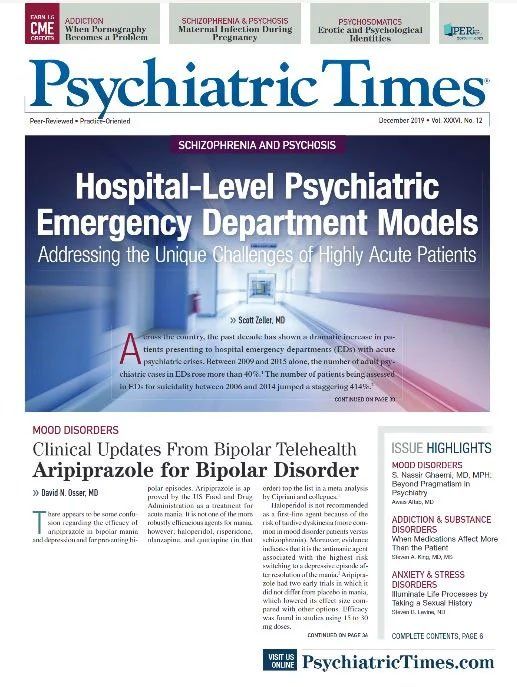Publication
Article
Psychiatric Times
Erotic and Psychological Identities
Author(s):
When people turn to mental health professionals about sexual problems-cyber or otherwise-how comfortable and informed are we?
©VTT STUDIO@STOCK.ADOBE.COM

SEX AND SEXUALITY
I recently received a consultation request from a colleague concerning an autistic male to female transgender adolescent who had started on cross sex hormones. She had also recently revealed her years-long identification as a cat, and this trans-species or “otherkin” identity was of greater distress than the gender dysphoria.
Seemingly unusual and overlapping erotic and psychological identities are nothing new to clinicians specializing in matters of sexuality. I have treated or consulted on cases of teenagers erotically attracted to cross-dressing, children, giantesses, extraterrestrial aliens, decapitation videos, and a fair number of trans-species identifications.
Physicians (especially psychiatrists) have long had the privilege of hearing patients’ most intimate revelations about their sexual behaviors and inner lives. Doctors since antiquity have dealt with matters of fertility, potency, and sexually transmitted diseases. However, it only has been since the 19th century that Western physicians systematically have studied and classified the broad diversity of human sexuality.
Victorian sexologists lumped all non-heterosexual, extramarital eroticism under the rubric of sexual perversions. In 1886, Richard von Krafft-Ebing’s Psychopathia Sexualis became the bible of paraphilias; he coined many of the terms we still use today, like sadism and masochism. During the 20th century, the list of what is considered perverse has been whittled down significantly. Mid-century sex researchers, like Alfred Kinsey, PhD, demonstrated that what had been considered rare and pathological behavior was actually commonplace: masturbation, homoeroticism, extra-marital affairs, and fetishism.
Cultural politics also revolutionized public sentiment on sexuality. The Civil Rights movement, feminism, and gay pride all contributed to changing attitudes about interracial relationships, women’s sexuality, and gay sex. Far from the time and mindset of Krafft-Ebing, many of those so-called perversions are now considered part of the great variety and color of human mating dances.
Classical psychoanalysis placed sexuality at the center of human psychological development. While Freudian theory was initially criticized for its pansexualism and emphasis on erotic fantasy (particularly in children), the general public has come to expect us shrinks to possess special insight into sexuality. Unfortunately, psychiatric education has failed on this count.
Surveys of training directors find that little didactic time is devoted to even traditional matters of reproductive health or women’s sexuality. Instead, psychiatric residents are most likely to learn about sexual adverse effects of medications and strategies for treating them.1 Training directors are open to having lectures on LBGT sexuality, for example, but cannot find the time in the psychopharmacology curriculum or the right faculty to teach this important area.2
A particularly novel challenge for clinicians is the impact of the internet on the lives of adults and children alike. The internet has supported a type of erotic speciation far beyond that of even the 19th century medicalization of sexual perversities (the term erotic speciation was astutely coined by Gayle Rubin, PhD).3 The internet has allowed individuals who might have felt like they were the only people in the world with a particular sexual (or other) inclination to discover that they are not alone. Furthermore, the internet helps people to nurture their sexual interests with textual and visual erotica as well as emotional support and even compatible partners. Some of these erotic interests may just be creative pleasures that add to the diversity of sexuality. Some, however, may be illegal, cause distress to individuals, be of concern to parents, or become too time consuming.
When people turn to mental health professionals about sexual problems-cyber or otherwise-how comfortable and informed are we? This collection of articles makes a valuable contribution to updating psychiatrists on challenging issues of sexuality. But they are just a launching point to help clinicians feel more at ease in supporting patients in their exploration of the spectrum of sexuality and untangling psychiatric problems from the effects of cultural opprobrium. These are not easy distinctions but require professional wisdom and nonjudgmental curiosity.
Disclosures:
Dr Rosario is an Associate Clinical Professor in the Department of Psychiatry at the UCLA David Geffen School of Medicine, and a child and adolescent psychiatrist with the Los Angeles County Department of Mental Health. He reports no conflicts of interest concerning the subject matter of this Special Report.
References:
1. Levine SB, Scott DJ. Sexual education for psychiatric residents. Acad Psychiatry. 2010;34:349-352.
2. Hirschtritt M, Noy G, Haller, E, Forstein M. LGBT-specific education in general psychiatry residency programs: a survey of program directors. Academic Psych. 2018;43:41-45.
3. Rubin G. Thinking sex: notes for a radical theory of the politics of sexuality. Vance C, Ed. Pleasure and Danger. London: Routledge & Kegan, Paul; 1984: 267-319 .







